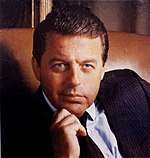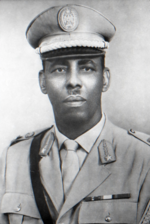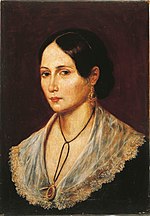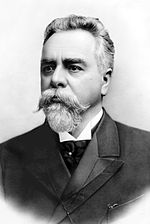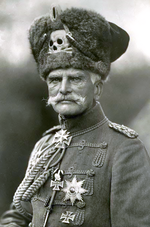| Portrait
|
Name
(Birth–Death)
|
Term of office
|
Election
|
Political party
|
Government
|
|
|

|
Matías de Navarro Bentancor
(1768-1818)
|
18 April
1812
|
10 August
1818
|
National Constituent Assembly
|
Non-Partisan
|
National Constituent Assembly
|
| Regarded as a national hero and as the Marshal of Independence, Matías de Navarro Bentancor was responsible for leading the Spanish colony of Tierra Verde in its struggle for independence against the Spanish loyalists. Navarro served concurrently as the Minister-president (head of government) and First-Director (head of state) until his death in 1818, when he was ambushed by Spanish mercenaries. Widely considered a military genius and an expert in guerrilla warfare, Matías was voted the fifth-best Longinorian political leader in history, and also one of the greatest Longinorians of all time. Many historians consider his ability to conciliate the military and the civil sphere as unique in Longinorian history.
|
|
|

|
Gastón Álvarez
(1763-1840)
|
15 August
1818
|
12 June
1821
|
No election held
|
Non-Partisan
|
National Constituent Assembly
|
| Widely considered to be the patriarch of Longinorian unification, Gastón Álvarez was the president of the National Constituent Assembly when Matías de Navarro was killed in combat. He is credited for promulgating the 1820 Constitution, the first one in Longinorian history, although views on him are controversial: some see him as a champion of democracy due to peacefully ceding power to his opponent and authoring a liberal constitution, while others see him as a money-hungry oligarch who extorted and bought his way into politics.
|
|
|

|
Augusto Moreira dos Santos
(1778-1834)
|
12 June
1821
|
12 June
1831
|
1823 Election
1827 Election
|
Federalist Party
|
Federalist Party-Party of Reason Coalition
|
| Augusto Moreira dos Santos was the Patriarch of Santa Crucian independence. A hero for both Luso-Longinorians and Afro-Longinorians, Augusto dos Santos was a child of a white peasant and a freed slave woman. After leading the Santa Crucian rebellion against the Kingdom of Portugal in 1809, Augusto entered politics as the defender of the Portuguese-speaking community of Longinor. Elected by the parliament in 1821, he peacefully ceded power to Mario Enrique de Rosa Barrera, at the time a close friend. Augusto is credited for protecting the rights of Amerindians and Amerafros and pacifying the countryside, which still was ravaged by the recent independence war.
|
|
|
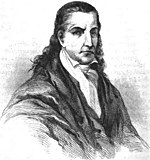
|
Mario Enrique de Rosa Barrera
(1761-1842)
|
12 June
1831
|
28 May
1835
|
1831 Election
1835 Election
|
Party of Reason
|
Party of Reason Government
|
| Dr. Barrera, as he is known, was the founder and leader of the Party of Reason until his death in 1842. An openly declared atheist and anti-clericalist, Dr. Barrera disseminated the ideals of the French Revolution on Longinorian soil, paving the way for the 1846 Liberal Revolution. At the beginning of his government, Mario Barrera managed to convince the former British colony of Elizabethland to join Longinor. Dr. Barrera ruled the country with an iron fist, oppressing the opposition, censoring the press, and sending his opponents into exile or "suicide". After a failed coup attempt against his government, Barrera sentenced his former protegé, Augusto dos Santos, to death. Despite frauding the 1835 Election, he could not stay in power thanks to a coup led by federalist caudillo Romero Barboza de León.
|
|
|

|
Romero Barboza de León
(1773-1841)
|
28 May
1835
|
2 September
1841
|
1836 Election
1840 Election
|
Federalist Party
|
1st Federalist Government
|
| A staunch liberal, Romero Barboza was responsible for leading his army of pawns into the city of Amarantina and overthrowing dictator Dr. Barrera in an almost bloodless coup. Romero lifted the censorship on the press, allowed the return of the exiled opposition, and began investing in the development of the army. A "war hawk", Barboza supported the independence movements of the Riograndense Republic and the Juliana Republic, two separatist provinces of the Empire of Brazil. He also supported the Colorados during the Uruguayan Civil War. Barboza de León died in office due to tuberculosis.
|
|
|

|
Francisco Quaresma de Queirós
(1778-1847)
|
2 September
1841
|
7 October
1844
|
1841 Election
|
Federalist Party
|
2nd Federalist Government
|
| Francisco de Queirós was a landowner of Santa Cruz who rose to national prominence after leading his personal army - the Quaremistas - in the Ragamuffin War. His effort to disrupt the Brazilian army was essential in the dismantlement of the Empire of Brazil. Nonetheless, he's remembered as an average minister-president. During his government, the country opened its borders to immigrants, thus beginning the process of "Interiorization", the settlement of the hinterland.
|
|
|

|
Vicente González Guajardo
(1775-1856)
|
7 October
1844
|
10 November
1846
|
1844 Election
|
Unitarist Party
|
Unitarist Government
|
| González was elected in 1844 in a highly contested election marked by fraud and political violence. A conservative and centralist, Vicente González was a landowner his own private army, just like the other minister-presidents of the Caudillo Republic. Due to his anti-Anglophone stances and policies, combined with his authoritarian manners, the population of Elizabethland and the Federalists began to organize resistance against his government, leading to the 1846 War and the subsequent establishment of the Revolutionary Republic.
|


